Justin Lieberman
“That’s how the films ended, you know? In a puff of smoke.“
—Michel Auder
Michel Auder’s films and videos depict a bohemian world of excess inhabited by artists, writers, junkies, prostitutes, and the idle rich. Throughout the ’70s he produced a number of short films that seemed to evince a desire to break down the boundaries between art and life, recording unscripted events as they unfolded among a group of his friends and acquaintances. These films are often rife with provocation, transgression, sex, drugs, and emotional outbursts, and Auder himself tends to take a central role even when he does not appear on the screen. The Feature (2007), made in collaboration with Andrew Neel, presents a dramatic rupture in this oeuvre, one that posits, but also alters, its meaning. The scope of The Feature is massive, encompassing a period of time no shorter than 40 years, yet it is an extremely focused film, one that drives at its point directly and without hesitation or moral compunction. In this, it is an act of autobiographical documentary filmmaking with little or no precedent. It has been said of The Feature that it shows us a man whose life is more interesting than his art.1This is a view that presupposes that what is being presented to us is an accurate account of the details of his life. It is an incorrect view, but not for the obvious reason. Here, I would like to discuss the particular way in which Auder’s art actually precedes what we might think of as his life, while simultaneously creating a space in which a life-as-art might emerge.
Auder often uses old footage and old photographs in his work. These aged materials seem to invoke a kind of authenticity, almost shamelessly parading their access to a past reality. Why is this the case? Theodor Adorno refers to this phenomenon in an essay regarding the phonograph. The more audible the technology itself (the scratchier the record), the more “present” the speaker. The more accurately the original sound is captured and reproduced, the more alienated and distant the speaker becomes.2Is this not also the case with successive generations of video recording equipment? As the image quality becomes more clear and crisp up to and including current high-definition cameras and monitors, we become more and more skeptical of what it is we are seeing. It is not the patina of age that lends mechanical reproduction its convincing qualities, but rather the willingness of the machine to disclose itself as mediator. In The Feature, obviously staged footage shot with new equipment is interspersed with “real” footage from years ago. Our first reaction is to see the recent footage as a fictional framing device for the older work, which was “true” and unmediated by staging and intention. (Staging and intention are of course the locations to which we displace our need for mediation in the absence of the palpable presence of technology.) We might think of this as a process of fictionalizing one’s own autobiography. If we approach it in this way, we find that within the film there are events that are “lies” and events that are “true.” But what determines this difference has little or nothing to do with the events as they happened, only with the particular technology used to represent them. From this standpoint, it is easy to imagine footage shot recently with an old camera, and inserted into the “true” sections of the film. These would then be no more or less truthful than the others like them. What this reveals is not that everything in the film is now false and/or unreliable. Instead, it presents a picture of truth as appearances.
Auder has occasionally been compared to Nan Goldin, a photographer whose images seem to hinge on their unmediated access to real people, situations, and emotions. This is a mistake. Goldin’s work posits the real as being solidly located in the human body. Her themes of sex, death, and relationships are expounded in ways that are unquestionably direct. We may see people role-playing, but what we are being shown is not the role but the humanity of the player as it occurs in this or that person’s corporeal form and its attendant fragility. Goldin tears away the mask, and, in doing so, the body becomes a sort of fetish object onto which meaning is projected.3This is a far cry from Auder’s work, in which there is no “human subject” behind the role being played. In The Feature, it is the role itself that is human, and this is what makes the work so difficult to confront. Because when we look too closely at these subjects, they simply disappear. In Auder’s videos, the surface behavior is the true location of each subject. A human body as shown in The Feature may, in fact, be the character, and the subjectivity the characters possess may, in fact, be produced by these bodies, but it cannot (as opposed to Goldin) be located there. In The Feature, the self of the subjects is like a ghost in the machine. This means that the truth of Auder’s subjects is not that they are limited, finite beings who, once dead, will be only rotting remains, but instead that they are infinite beings, their subjectivity transferred from one machine (their bodies) to another (the video). No substantial loss takes place in this transference. While this may initially sound like a McLuhanism, a key factor is that no substantial gain takes place either. There is no transcendence in the transfer. No digital ecstasy accompanies it. The subject Viva does not become a saint, nor Michel himself. They do not become more or less real. They continue on as they were.
Throughout the film, Auder returns to moments from his past, inserting intentions, reasons, free choices and, along with Neel, coherent narrative structure into a life that might otherwise be an unwatchable chaos of thousands of hours of recorded events in real time. Indeed, the tapes, films, and hard drives sitting on his shelves are just that. But The Feature is not a life-size map of reality, laid over reality, as in Jorge Luis Borges. Here Auder’s work diverges from that of his contemporaries Jonas Mekas and even Harry Smith, who sought to obliterate certain boundaries between art and life entirely. With The Feature, what we are seeing is the emergence and unfolding of the mechanism of consciousness. The collaborative retroactive positing of coherence into the narrative of Auder’s existence is perfectly analogous to the way in which consciousness asserts itself4. Auder’s life exists only insofar as it appears to itself, and it does this in full view of the public through the film. Likewise in public, Auder assumes the responsibility for his life. In this way we can see that The Feature is not confessional per se, in that Auder is not involved in “revealing” himself or what he thinks of himself. Everything in the film might or might not have been subjected to revision, but we can only ever take this revision as the truth.
There is another way in which Auder structures his own existence, and this has to do with bohemia. Bohemian existence and its relationship to artistic production is constantly reaffirmed. So much so that it begins to take on the structure of a belief system. Auder himself seems to play the role of “the guy with the camera” in the various bohemian communities he inhabits. Here it would seem that Harry Smith and Michel Auder converge. Both continually align themselves with fringe elements of society (junkies, artists, prostitutes). Both document these milieus so that they might be preserved, with a sincere belief in their value. But while Smith assumes an ethnographic role (albeit one that is highly complicated by the way in which he posits himself as an other through the particularly modern ways in which he frames his subjects), Auder rejects even this minimal distance. We might say that while Smith’s work presents conflict between multiple iterations of the modern, Auder’s insists upon the modern as singular and himself as a practitioner. Unlike Smith, whose bohemian position and ethnographic take on the similarities between the modern and the pre-modern affords him a privileged position in relation to both, Auder’s work evinces an almost impossible belief in the modern from the standpoint of a participant in the ongoing project of its construction. This is the key that explains the odd things Auder’s documentary practice seems to take for granted in dealing with such highly documented subjects as Andy Warhol, Cindy Sherman, Eric Bogosian, and Harry Smith himself. He does not strive for an accurate or even systematic representation of these subjects. They appear on the screen only insofar as their presence serves the narrative. It is interesting to note that the films are staked neither on the obscurity nor the recognition of their subjects. In fact, despite their celebrity, this recognition-of-subjects adds little or nothing to our understanding at all. In the face of so many highly individualistic personalities all playing themselves, this would seem nearly impossible. But the feat accomplished via the folding of the bohemian (the social relationships which produce divergent narratives within a group) into the modern (singularity of narrative with regards to the group as an ensemble) creates a situation within the film that also has the effect of folding each individual into the whole. The film assumes the role of the singular historical account of the individuals it portrays, and in each and every scene it is this account that takes precedence, rather than the individuals.
Here is where we might enter into an understanding of the structure of the film’s climactic “final decision,” which appropriately does not belong to Auder. Cindy Sherman decides to end their marriage, and once again we experience Auder’s permissiveness with his subjects in allowing events to take place. Auder is extremely careful with his editing in these final scenes, allowing us to see no more than we need to in order to understand. Michel has moved from inhabiting a series of squalid apartments shared by various drug addicts and fuck-ups to a perfect example of a sophisticated Manhattan bourgeois interior inhabited by a celebrity working professionally within the culture industry. This is nearly all we see of his marriage to Sherman. Michel the character walks through the halls of the apartment, and the shiny stainless-steel appliances are shown in a sequence that also includes a small electric-chair painting by Warhol (or is it a photograph by Lawler?), hung in a tasteful salon arrangement along with other well-known artworks. Might Auder have been there when it was made? It is the world that has changed here, and the character refuses to adapt. The reality of the situation is a historical one. It is the passage from the down-and-out bohemian art world of the ’70s to the “professional bohemianism” of the ’80s; from an unspoken solidarity among individuals to a new world of competitive individualism reaffirmed by financial success. The beginning of the Reagan era signaled the ultimate subsumption of Bohemia into the mechanism of capital. This is a nearly insufferable loss to Michel, who can only respond to this desublimation of individualism with a kind of petulance.
This refusal on the part of the character of Michel is his final free act of the film. Here we can see the way that a free act must necessarily be structured as a confrontation and dismissal of one’s own desire. Had Michel continued on with this existence and accepted the objects of his desire, these objects would have then lost their meaning, and this would have been a far greater loss than the objects themselves. The wife and the apartment would have become part of a stable unchanging landscape rather than a moment within an ongoing narrative of struggle. Michel the character recognizes the falsity of his situation. And so he sacrifices these things, along with his marriage, precisely in order that he might be rewarded with their loss. Like every free act in the film, the drastic nature of the refusal is twofold. At its base level, it is a refusal by the character Michel directed at himself, a personal decision made so that he might be able to live with himself. But it is once again at the level of the universal that the act finds its true meaning when the filmmaker Auder retroactively posits it. It is the radical refusal of an individual directed towards a society caught in the loop of its own self-congratulatory monologue.
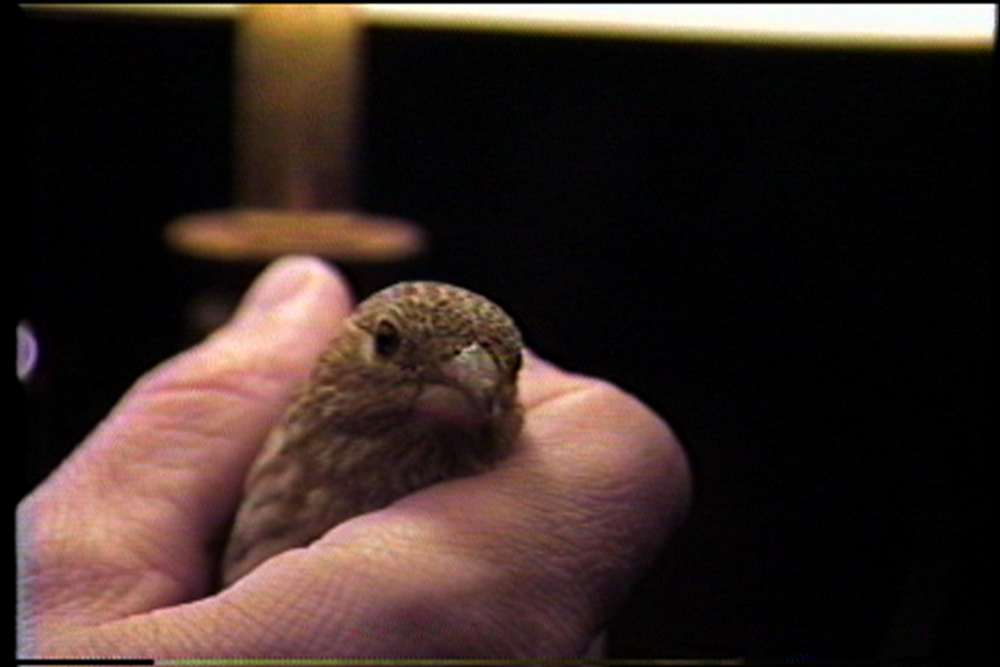
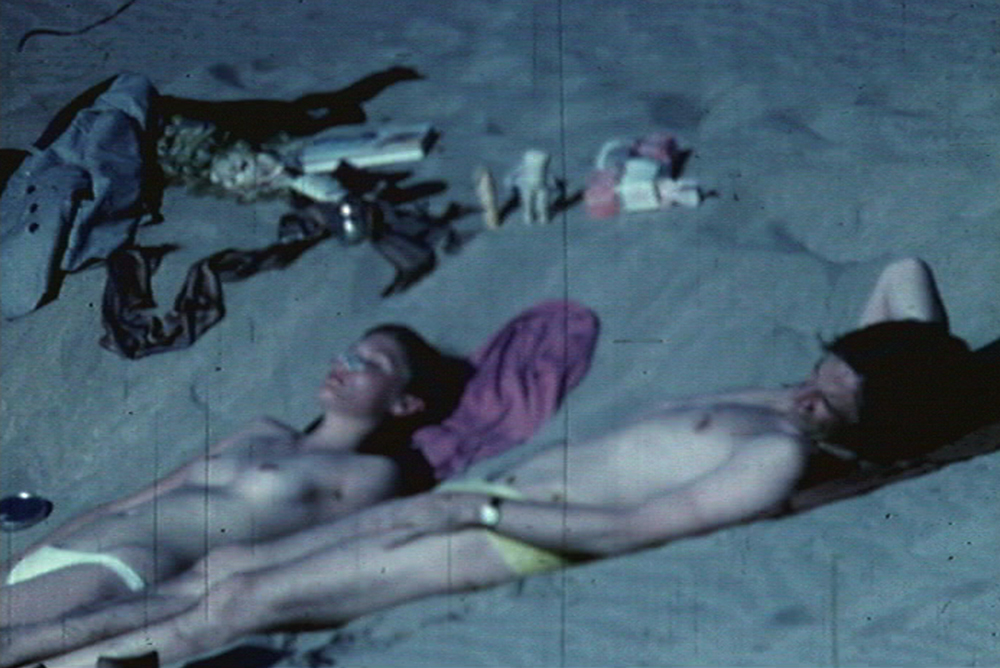
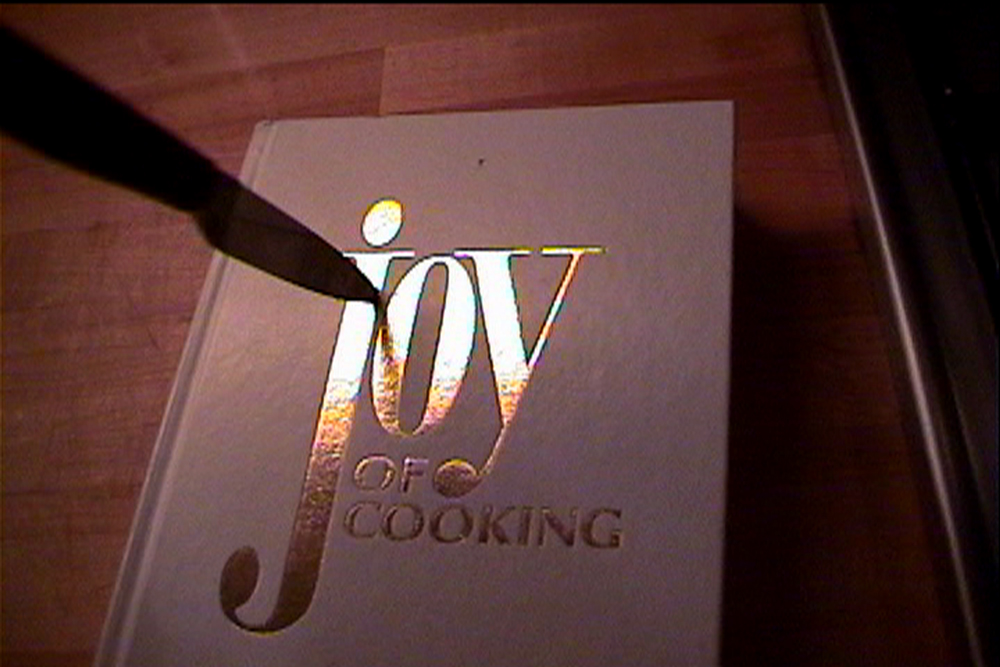
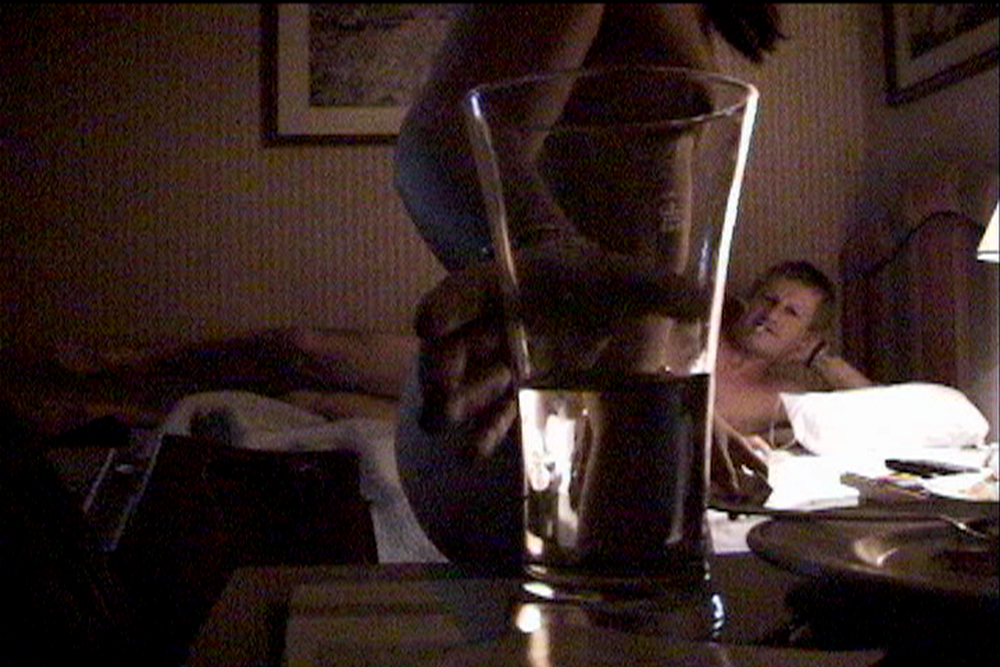
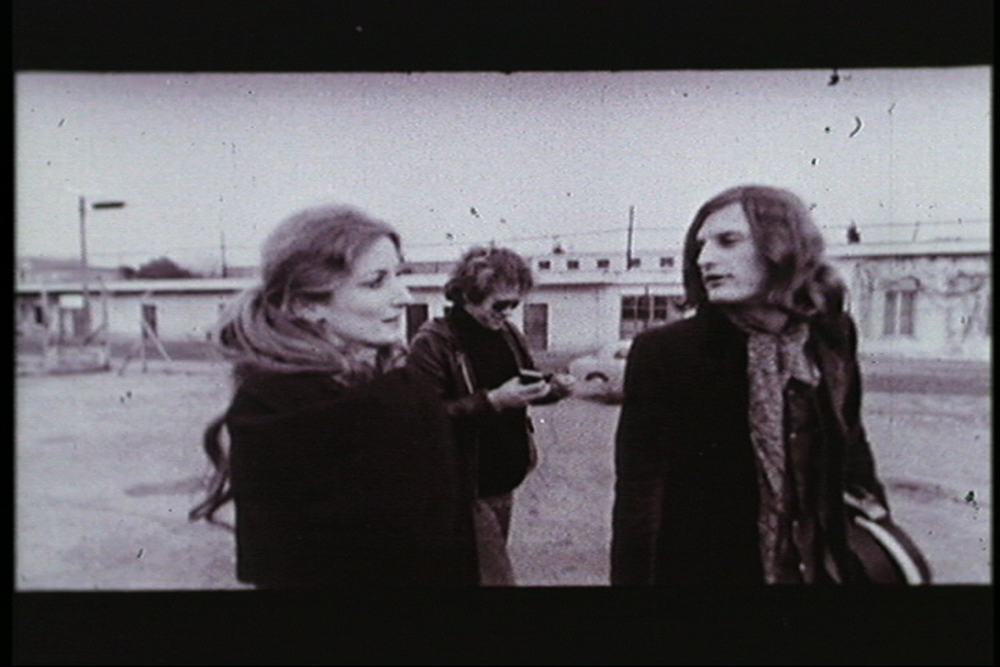
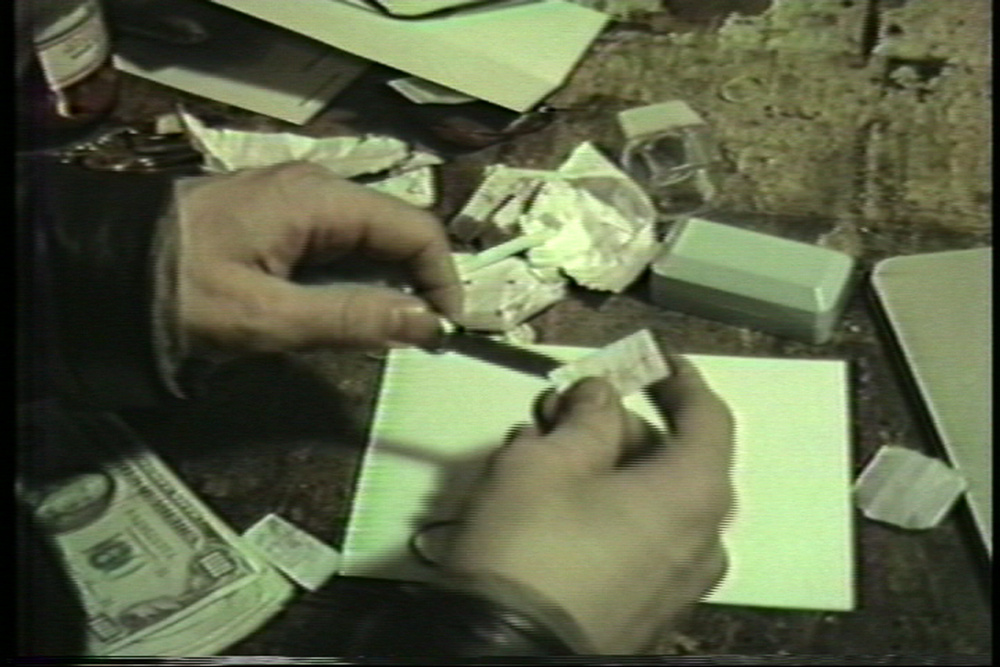
Endnotes
1. See J. Hoberman, “Michel Auder’s The Feature,” The Village Voice (March 18, 2009).↩
2. See Theodor W. Adorno, “The Curves of the Needle,” trans. Thomas Y. Levin, October 55 (Winter, 1990), pp. 48-55.↩
3. I owe this insight to John Miller; see “The Body as Fetish: an Open Letter to My Would-Be Compatriots” in Aperto ’93: Emergency/Emergenza, XLV Biennale de Venezia (Milan: Giancarlo Politi Editore, 1993).↩
4. See Slavoj Zizek on Hegel’s “Positing the Presuppositions” in The Parallax View (Cambridge, MA: MIT Press, 2006)↩












